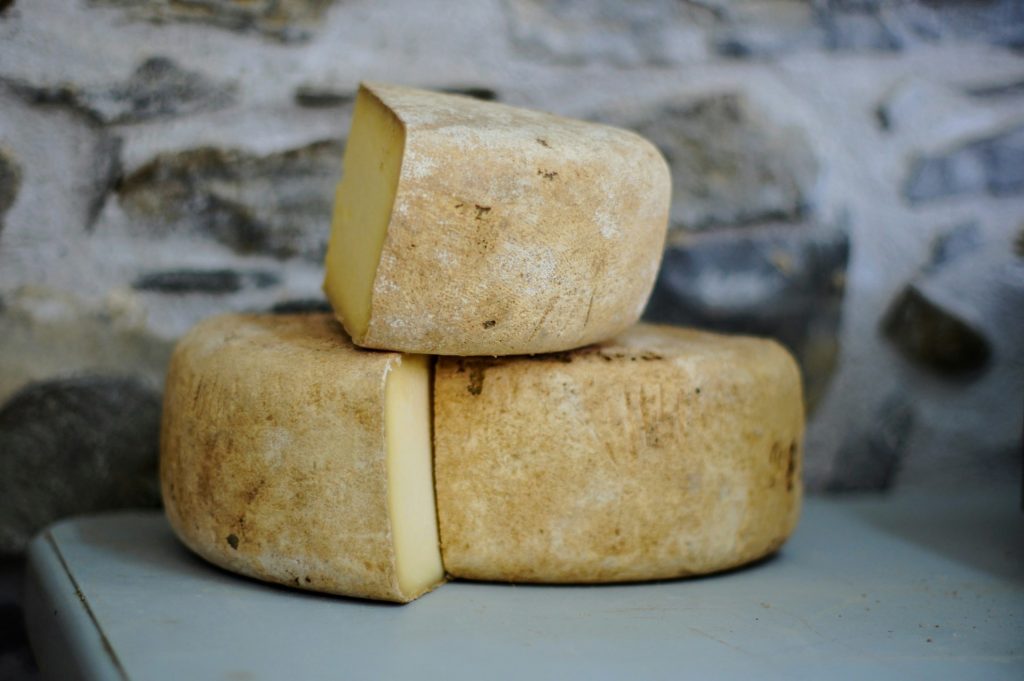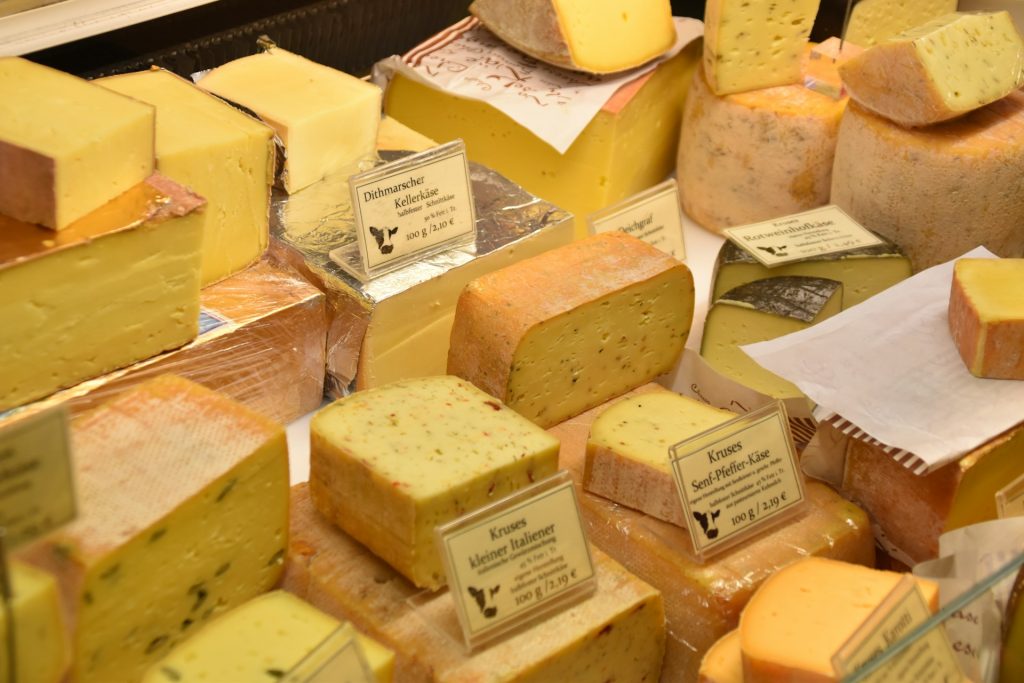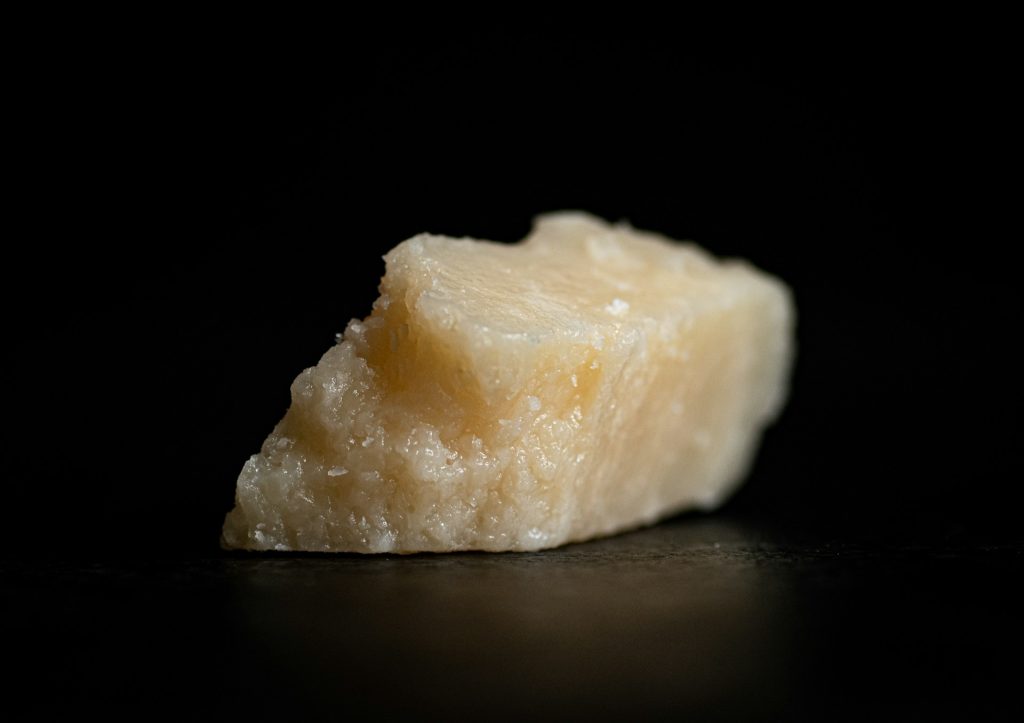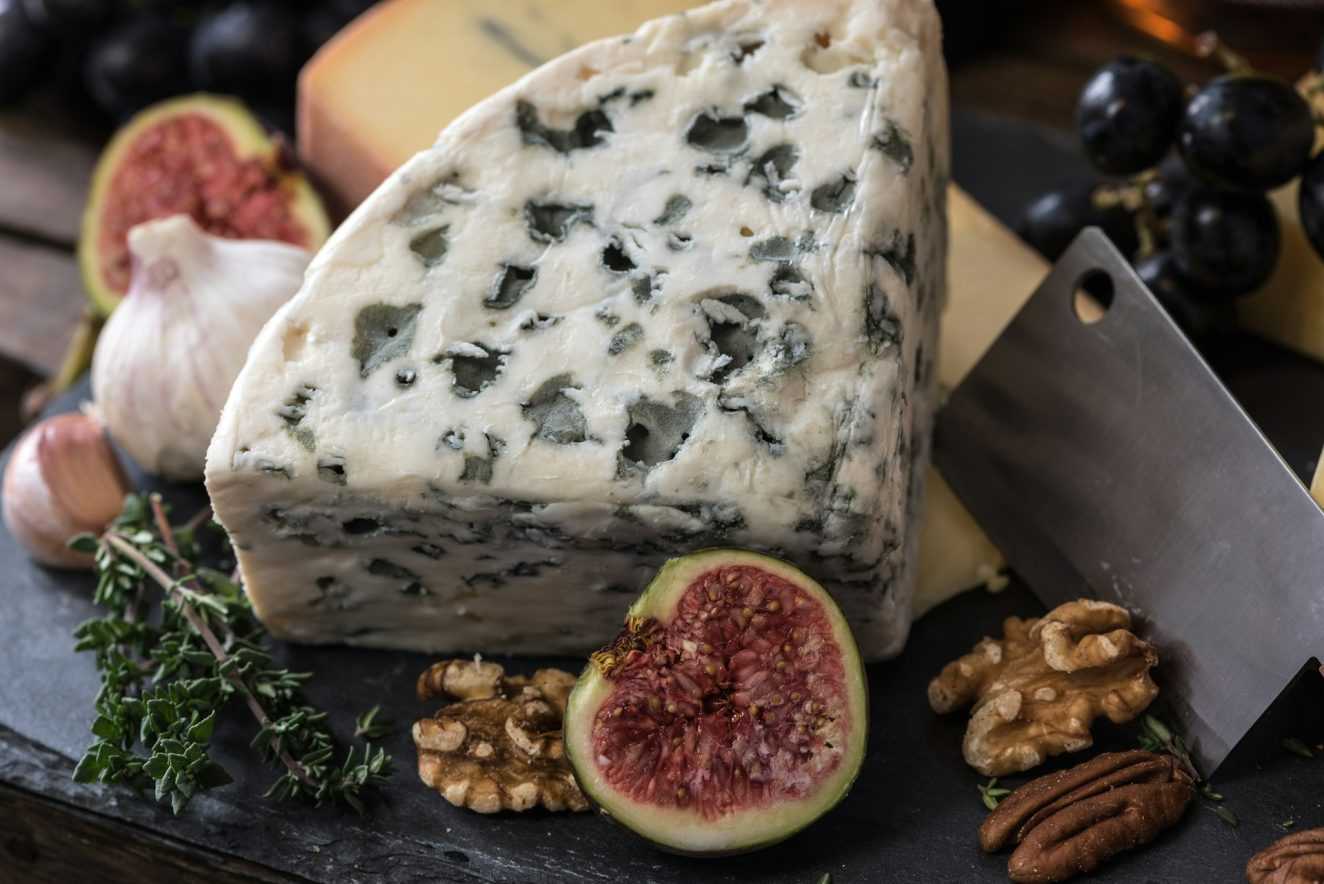Did you hear about the explosion at the cheese factory? There was de brie everywhere! Ba dum bump. Thank you, thank you—we’ll be here all article. Now, get ready for some cheesy science and maybe a few more cheesy jokes.

The Love Affair with Cheese
We love cheese. Love it, love it, love it. And we are eating more of it. In the past 30 years, the average cheese consumed per person in the United States has increased by 41%, up to 36 pounds of cheese per person. Mozzarella consumption alone skyrocketed by 178% in the same period.
The Origins of Cheese
But cheese is kind of weird. It is storable milk. It can last weeks or years longer than milk, and there is such a variety of cheese. But when did we start eating cheese? We don’t know the exact origin, but at some point, someone must have thought, “You know that stuff at the bottom of the milk? That stuff that dried out and sat for weeks? I’m going to eat that!” And when they survived, proto-cheese was born.
The Chemistry of Cheese Making
Humans have used practical knowledge of chemistry and biology to preserve food for millennia, long before refrigeration and other modern technology. To make cheese, bacteria digest sugars in milk and produce lactic acid. The additional lactic acid lowers the pH and hinders the growth of harmful organisms. By turning milk into cheese, its shelf life is extended from about three weeks to two decades, or even longer.
Basic Cheese is Acidic. What?!
The basic steps in cheesemaking are: adding beneficial bacteria to milk, coagulating the milk into a soft white substance called curd, and pressing and cutting curd into the finished cheese shape. But to get a delicious final product, the milk must be at the right temperature and the right pH at the right time.

Understanding Acidity and pH
“You cannot fully understand cheese and cheesemaking unless you understand acidity and pH,” says Paul Kindstedt, professor at the Vermont Institute for Artisan Cheese, in Burlington, Vt.
The pH measures the concentration of hydrogen ions (H+) in a solution, with most solutions between the range of 0 and 14. The more acidic the solution, the lower the pH, with 7 considered “neutral” and above 7, “basic.” Milk has a pH between 6.6 and 6.7. pH is a logarithmic scale, so one unit differs by a factor of 10. A pH of 6 has ten times the H+ concentration than a solution with a pH of 7. This logarithmic scale is why even apparently subtle pH differences can be quite significant.
The Cheesemaking Process Unveiled
To make cheese, milk is pumped into a large tank and warmed to the right temperature. Two different bacteria are used in this process: mesophilic and thermophilic bacteria. Mesophilic bacteria grow best in moderate temperatures, typically between 20 and 45°C (68 and 113 °F). They are used to make mellow cheeses such as cheddar, gouda, and Colby. Thermophilic bacteria thrive between 45 and 122 °C (113 and 252 °F) and are used to make sharper cheeses such as Gruyère, Parmesan, and romano.
The Magic of Coagulation
In the tank, the bacteria ferment the sugar present in milk, called lactose, into lactic acid. As more lactic acid is produced, the milk’s pH lowers. After the bacteria replicate and culture the milk at the optimal temperature, the milk coagulates and changes from a liquid into a firm, rubbery material.
From Curds to Cheese
Soft cheeses, such as cream cheese, coagulate slowly. Hard cheeses, such as Colby and Swiss, require a faster coagulating phase and a firmer resulting curd, so cheesemakers add a substance called rennet. The chymosin enzyme in rennet cuts the negatively charged ends on the micelles’ surfaces. No longer polar, the micelles are repelled by water and begin sticking together.
The Art and Science of pH
Different cheeses require different rates of acidification to achieve their unique tastes and textures. Cheesemakers rely on measurements and intuition to determine the optimal pH at each stage of the process.
Aging and Flavor Development
Once the milk has coagulated, the resulting curd is cut into smaller cubes, changing from a rubbery solid into cubes floating in liquid whey. Whey does not precipitate as the pH drops because of the proteins present. As curds expel more whey, the result is a drier final cheese. Cheeses age in a temperature- and humidity-controlled environment for varying lengths of time depending on the type.

Each of these cheeses starts with milk, but different bacterial cultures and different rates of acidification make each variety unique. Using lactic acid production to preserve food is a millennia-old process that still results in delicious food today. Whether you’re a fan of creamy brie or sharp cheddar, there’s a cheese out there for everyone, each with its own story of science and artistry. So, next time you indulge in a cheese platter, take a moment to appreciate the intricate processes that went into creating those delectable bites. Cheers to cheese!





